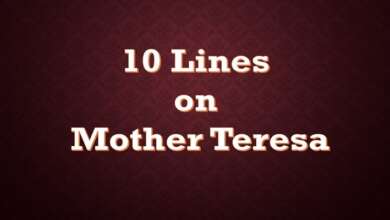10 Lines on Manipuri Dance for Students & Children
10 Lines on Manipuri Dance
10 Lines on Manipuri Dance – Today we will learn about Manipuri dance. Its origin can be seen in ancient times. These dances are associated with rituals and traditional festivals that have mythological references to the dances of Krishna, Radha, Shiva, Parvati, and other gods and goddesses who created the universe. Let us get some more information on these Manipuri dances through 10 sentences.
Set (1) 10 Lines on Manipuri Dance
- Manipuri is the classical dance of Manipur.
- Manipuri dance is divided into two main categories which are Taal Rasak and Danda Rasak.
- The dance themes are devotional and are performed on religious occasions and in temples throughout the region.
- These dances often reflect themes from Hindu mythology, especially the story of Krishna and Radha.
- Additionally, there are many Manipuri dances that are based on folk tales and legends.
- The term Manipuri actually includes many dance forms from the region.
- Thang Ta, Nupa Pala, and Lai Haroba are some of the Manipuri dance forms.
- The dancers of the dance perform circular movements and avoid any jerks, sharp edges, or straight lines.
- Manipuri dancers do not wear ghunghrus which is unlike other classical Indian dance forms.
- Manipuri dance has Vaishnava themes associated with it and some themes related to Shaivism and other local deities.
*******************************************
Set (2) 10 Lines on Manipuri Dance
- Manipuri dance is one of the oldest classical dance forms in India.
- It is one of the eight major Indian classical dance forms that has its roots in the northeastern Indian state of Manipur.
- Manipuri dance is also called Manipuri Raas Leela.
- Raas Leela is also known as the dance of heavenly love between Lord Krishna and Radha.
- The history of Manipuri dance dates back to ancient times, even before recorded history began.
- The dance style is characterized by simple and calm physical movements that are imbued with the spiritual themes of the melodious Raas of Radha-Krishna.
- Manipuri dance is known for its graceful and fluid movements which are often described as a wavy dance.
- The dancers’ bodies move continuously and fluidly, without any suddenness or jerk.
- Mudras, or hand gestures, are an important part of Manipuri dance that dancers use to express different emotions and thoughts.
- Guru Bipin who served as director, instructor, and choreographer of Manipuri dance is called the “Father of Manipuri dance”.
More Like This-
Which dancer is known for the Manipuri dance style?
Answer – Guru Singhajit Singh is a master of Manipuri dance style who has distinguished himself as an excellent choreographer, artist, scholar, and artist with great creative potential.
Why is Manipuri dance famous?
Answer – Its origin can be seen in ancient times. These dances are associated with rituals and traditional festivals that have mythological references to the dances of Shiva and Parvati and other gods and goddesses.
Who is the father of Manipuri dance?
Answer – Guru Bipin Singh was a director, choreographer, and teacher of Manipuri dance and is considered the father of Manipuri dance.




